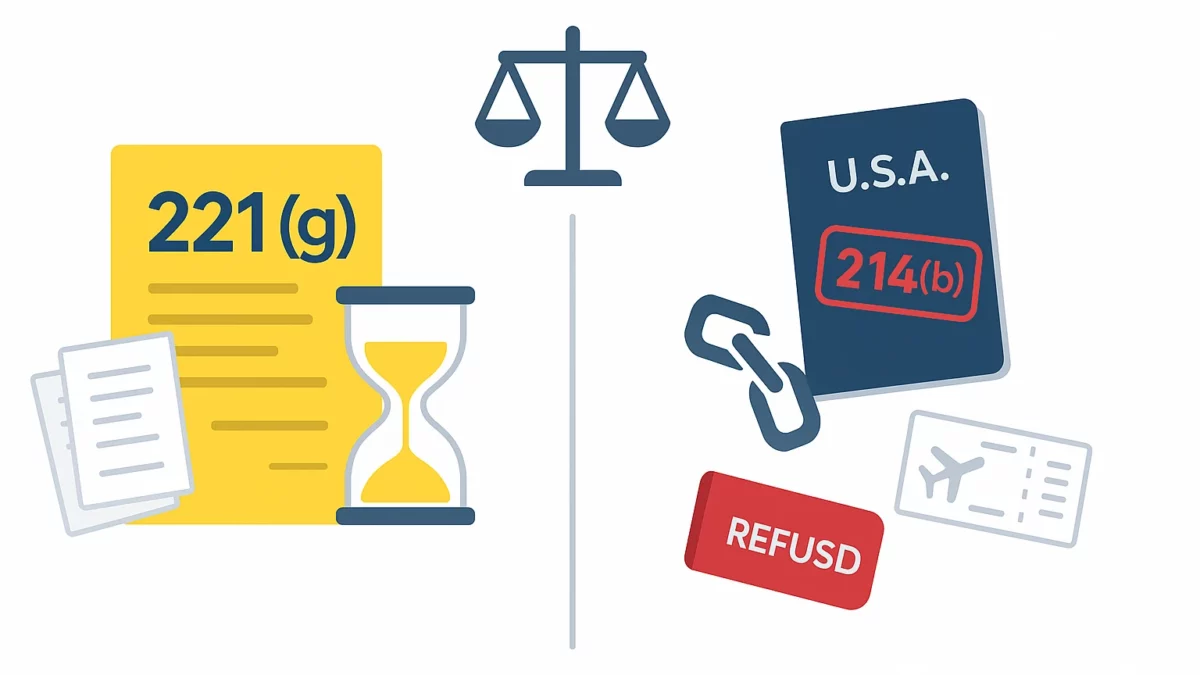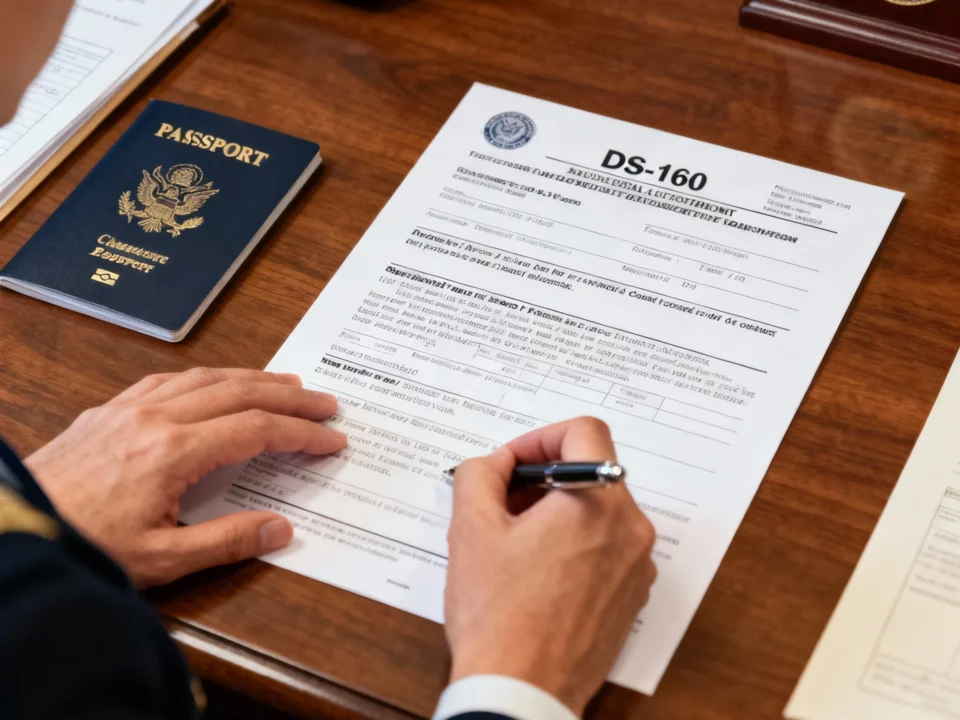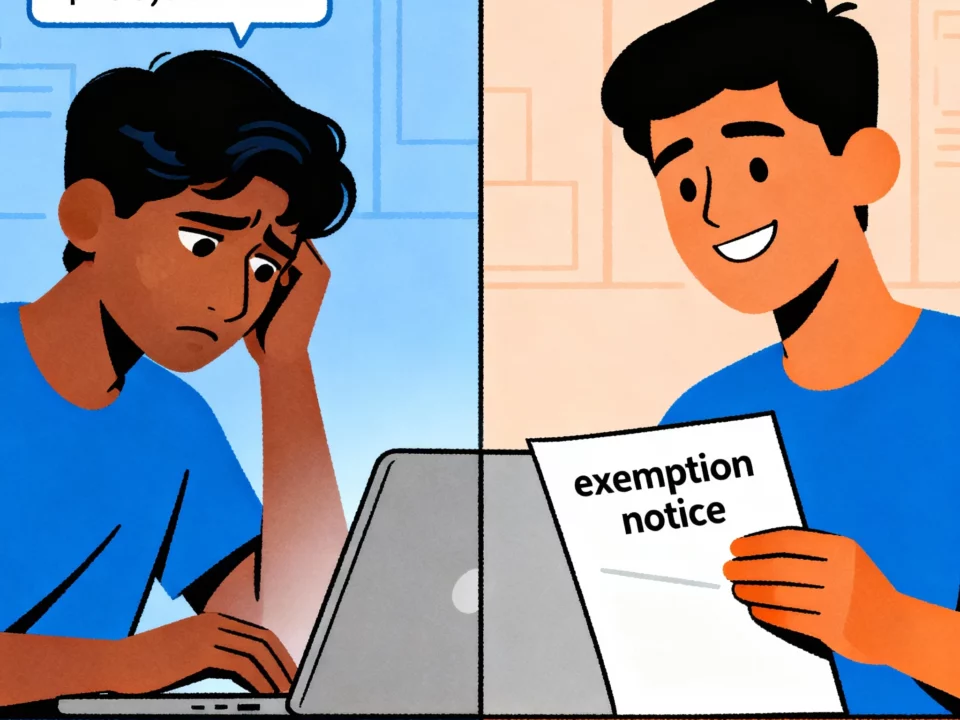Difference Between 221g and 214b: What It Means for F1 Visa

If you’ve faced a U.S. visa refusal, you probably walked out of the consulate clutching a colored slip — your mind racing with questions.
What did you really get? 221g administrative processing or a 214b refusal?
Both sound equally scary, but they’re very different. And knowing the difference between 221g and 214b can save you stress, time, and even money.
In this blog, I’ll explain what each means, what steps you need to take next, and why expert support like mock interviews or document coaching might help — so you can move forward confidently.
🧾 What is a 214b refusal?
Let’s start with the one that causes the most panic.
Under Section 214(b) of the U.S. Immigration and Nationality Act, the visa officer must refuse your visa if, at the time of the interview, they’re not convinced you qualify for a non-immigrant visa.
For F1 visa students, this often comes down to:
– Not proving strong enough ties to return home after graduation
– Answers in the interview sounding weak, memorized, or contradictory
– Unclear or insufficient financial documents
– Past visa refusals that weren’t explained convincingly
Importantly, a 214b refusal is a final decision at that interview.
You can still apply again — but you must fix what went wrong and pay the visa fee again.
🛂 What is 221g administrative processing?
Now, let’s look at the other scenario.
221g administrative processing is a temporary refusal, meaning the officer cannot approve your visa on the spot because:
– They need more documents or clarifications
– Your case needs additional security/background checks (common in STEM fields)
– They must verify details with other U.S. agencies
You’ll usually get a colored slip (white, pink, yellow, blue, green) explaining what’s missing or what checks are pending.
Crucially, under 221g:
– You usually don’t need to pay again
– You usually don’t need to book a fresh interview
– The visa process continues once you submit the requested documents or once checks are cleared
🔍 Difference between 221g and 214b at a glance:
Let’s make it crystal clear with a quick table:
| 214b refusal | 221g administrative processing | |
|---|---|---|
| Meaning | Final refusal at interview | Temporary refusal pending further checks or documents |
| Need to reapply? | Yes | Usually no |
| Need to pay MRV fee again? | Yes | No |
| New visa interview? | Yes | Usually not |
| Common reasons | Weak ties, unclear answers, financial doubts | Security checks, missing docs, SEVIS verification |
| Support needed | Mock visa interviews, SOP/profile improvement | Document checklist, professional explanation letters |
Understanding this table helps you truly see the difference between 221g and 214b in practice.
🎓 What should students do after a 214b refusal?
Since 214b is a final refusal, your next steps are active:
– Reflect honestly on what went wrong: was it the answers, profile gaps, or documents?
– Possibly update your DS-160 (or complete a new one)
– Pay the visa fee again
– Book a new interview slot
– Most importantly: do mock interviews with experienced visa coaches to fix weak answers and build real confidence
Here, professional help like Bluehawks EduAbroad can make a huge difference. By identifying common red flags and training you to answer confidently (without sounding scripted), your chances improve in the next attempt.
📝 What should students do after 221g administrative processing?
Unlike 214b, you typically don’t reapply. Instead, your job is to:
– Read the slip carefully and understand what exactly is needed
– Gather and submit documents quickly and clearly
– Monitor your case status weekly on the CEAC website
– Possibly write a short, professional cover letter explaining documents or clarifying doubts
– If the process takes unusually long, politely email the consulate to check status
Professional support here is equally valuable. While there’s no new interview, incomplete or poor-quality documents can turn a pending case into a final refusal.
⚡ When can 221g turn into a final refusal?
Even under 221g administrative processing, the consulate can eventually refuse your visa if:
– You don’t provide requested documents
– Your documents raise new concerns
– Security checks reveal issues
– Your answers or documents show inconsistencies
In that case, the visa might be refused finally under 214b (or another section). Then, you must reapply, pay the fee, and prepare for a new interview — which brings us back to needing mock interviews and profile upgrades.
📌 How Bluehawks EduAbroad (or similar experts) can help in each case
Knowing the difference between 221g and 214b helps choose the right support.
For 214b refusal:
✔ Detailed mock visa interviews
✔ Profile & SOP review
✔ Guidance on non-immigrant intent and common interview traps
For 221g administrative processing:
✔ Document checklist & professional review
✔ Drafting clear, concise explanation letters
✔ Monitoring status and advising on next steps
✔ Tips for polite consulate communication
Many students wrongly assume help is only needed before the first interview. But support during administrative processing is often what keeps a “pending” case from becoming a final refusal.
🧾 FAQ: Answering common doubts
Do I always need to reapply after 221g?
No. Usually, once you submit requested documents, the consulate makes a final decision.
If I get 214b again and again, should I stop applying?
Not necessarily. But it does mean your profile or answers aren’t convincing officers. Get expert help before the next attempt.
Are slip colors under 221g important?
They hint at what kind of check is happening (white, pink, blue etc.), but what’s printed on the slip matters most.
Does the CEAC status always say “Refused” during 221g?
Sometimes yes — it can show “Refused” while still pending under administrative processing. That’s normal.
🙌 Conclusion: Why knowing the difference matters
At first, both feel like a brick wall between you and your U.S. dream. But the difference between 221g and 214b changes what you should do next:
– 214b means new fee, new interview, and stronger preparation
– 221g means submit documents quickly, stay patient, and monitor status
Either way, the right professional support — mock interviews, document review, or strategy guidance — gives you the confidence and clarity to succeed.
If you found this helpful, share it with a friend who’s confused by visa slips. Because understanding the difference could save them weeks of worry and another refusal.



